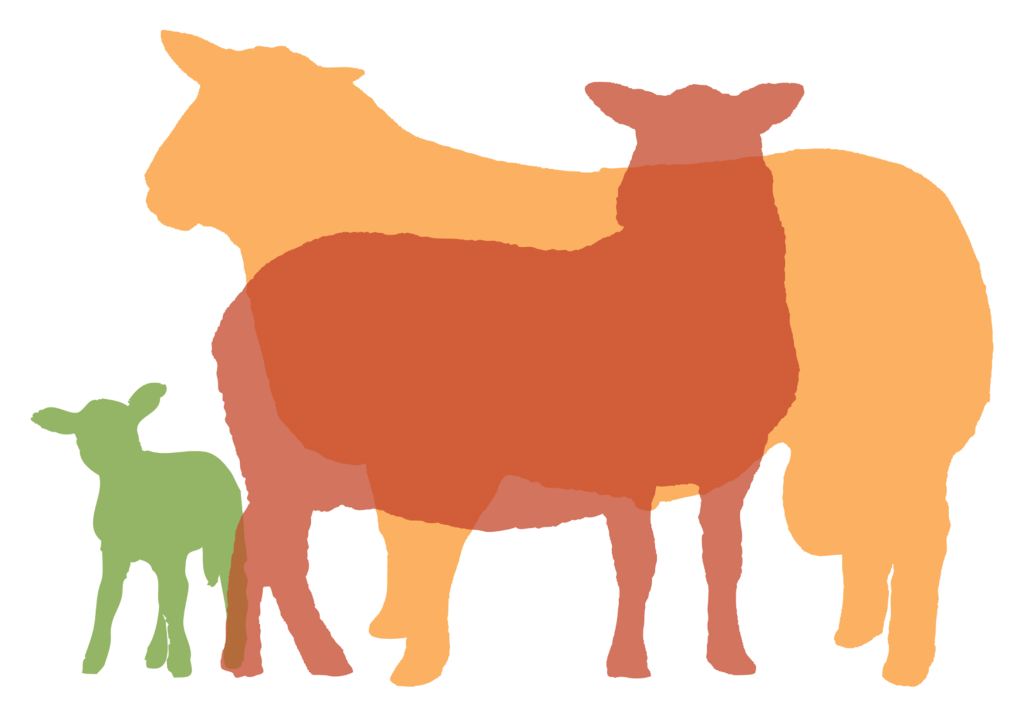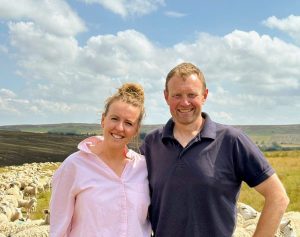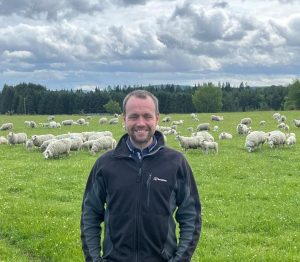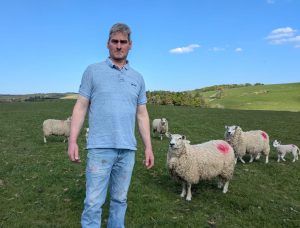Reducing input costs and breeding a higher quality lamb, whilst maintaining output are amongst the priorities for Chatsworth Estate’s sheep enterprise where farm manager, David Howlett is preparing for Brexit. “We are doing the leg work now,” he says a head of the Innovis open day he will be hosting on the 30th of July.
“We are looking at options for an easier sheep to keep and manage to run on the estate’s 2,000ha in hand farming operation, and have an introduced to the enterprise an on-farm trial focused on the Aberfield cross Lleyn with the objective of rearing close to 1.8 lambs per ewe without any concentrate. Most of our land is in a large Environmental Stewardship Scheme and a large proportion of our grazing is quite marginal so we are looking for a sheep that will do well off of this but still give us the required amount of lambs.
“So far, it looks as though the Aberfield cross is here to stay; last year the ewes on trial left the highest margin of all the flocks on the 3,400 ewe enterprise, and that figure didn’t take in to account fixed costs.
“We are out wintering the Aberfield cross ewes at 900 feet and finding that they are able to maintain condition without any supplementary concentrate feed, apart from mineral blocks, Supplementary feeding of some of the other flocks on the estate is a big expense and a large part of the cost of production,” David explains. “It’s not just the significant feed expenditure, but the cost of the time it takes one of our two shepherds to do the job, and that’s what we are trying to eliminate.
“This season we increased the flock to a total of 800 Aberfield cross Lleyn and pure Lleyn ewes, they scanned very well and lambed outdoors at the end of April with one shepherd. They did remarkably well considering the extreme weather conditions that we all experienced this year.”
Whilst the Aberfield cross gimmer lambs are being retained as replacements to put to a terminal sire for finished lamb production, David says the wether lambs are demonstrating pleasing performance. “Growth rates were really good and we achieved a higher percentage grading within the U bracket.
“Furthermore, the Aberfield cross is stretchy yet smaller framed sheep, consequently we could stock at higher rates in future, if we wished.”
David says there were other reasons he was attracted to introducing the Aberfield maternal sire which offers growth and muscling as well as maternal attributes. “I’m also interested in genetics, and all sheep bred by Innovis are accompanied by performance recorded data – it’s a tool that I believe has to come to the fore in future, and I’d say should be understood and embraced. Innovis bred sheep are reared from pure forage based diets which adds to their reliance. Furthermore, all rams have been MOT’d, quarantine treated and supplied with full health treatment records.
“Added together and the Aberfield cross benefits appear to be working for us towards driving down costs whilst maintaining output.”



